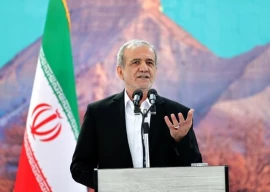
The Governor’s House in Lahore is built around the tomb of one of the cousin’s of the Mughal Emperor Akbar. It’s said that the cousin was a great patron of sports, and near his grave is a kushtee gumbaz dedicated to wrestlers and kabaddi-wallahs. The land around the tomb and kushtee gumbaz was taken over by the British when they bought the Punjab. In fact, the governor’s mansion is built on and around the tomb. It’s said you can see the sarcophagus in a chamber under the dining room.
The Governor’s House in Lahore is spread over 90 acres and has one of the largest residential gardens in this part of the world. Of course, since there’s a 20-foot wall surrounding the place, very few people have actually seen the inside of the place, despite the efforts of the present incumbent to open its doors to the awam.
Last year, when the Government of Punjab’s overdraft with the State Bank was fast approaching its limit, someone came up with the idea of selling some of the prime land that belonged to the government throughout the province. In Lahore, properties like the chief justice’s official residence and, of course, the Governor House, were said to be on the list.
Now, regardless of what people may think about the Government of Punjab’s idea and regardless of what people may think of a plan to sell an iconic piece of history (and plenty of people have, I am sure, plenty to say about both), the news that the Governor House may have a taker raises some usually talked about issues.
Under the law, property belonging to the provincial and federal government is exempt from payment of property tax. That means the bureaucrats sitting in GOR-I don’t pay property tax. It means that we have, for example, a state guest house that sits, usually empty, taking up prime land in the middle of the city. The Governor House sits over 90 acres and is home and office to one man. The question is: is it fair to have such properties taking up so much space when the work that’s done in them needs only a fraction of the footprint. And what’s the logic behind exempting government offices from property tax?
This is a problem not just in Lahore but throughout Pakistan. In almost every Pakistani city, we see large tracts of land being underused by government. By remaining static and by having a tax exemption that makes them less likely to rationalise their operating costs, these offices harm the urban economy by freezing an important category of capital — land — from entering the market place.
I’m sure plenty of people will want to remind me of how historically important some of these buildings are. But are they really? What’s so special about the Governor’s House that it can’t be parcelled into smaller plots? Smart design could transform the property into a park, a government office, a mixed-use residential zone. One could keep the structure of the Governor’s House, for sure, but what the purpose of keeping land from better use by the public?
The offer to purchase Governor House, and other properties, should act as a reminder of the things we overlook or take for granted in our cities. In Karachi, a city of nearly 19 million people, over half the population lives in slums or katchi abadis. Is it fair, then, to have something like the Sindh Club in the middle of the city (the same is true of the Gymkhana Club in Lahore)? Shouldn’t we be looking to find alternative uses for such land that’s for the benefit of the public rather than the minority elite?
Published in The Express Tribune, July 10th, 2010.













COMMENTS
Comments are moderated and generally will be posted if they are on-topic and not abusive.
For more information, please see our Comments FAQ